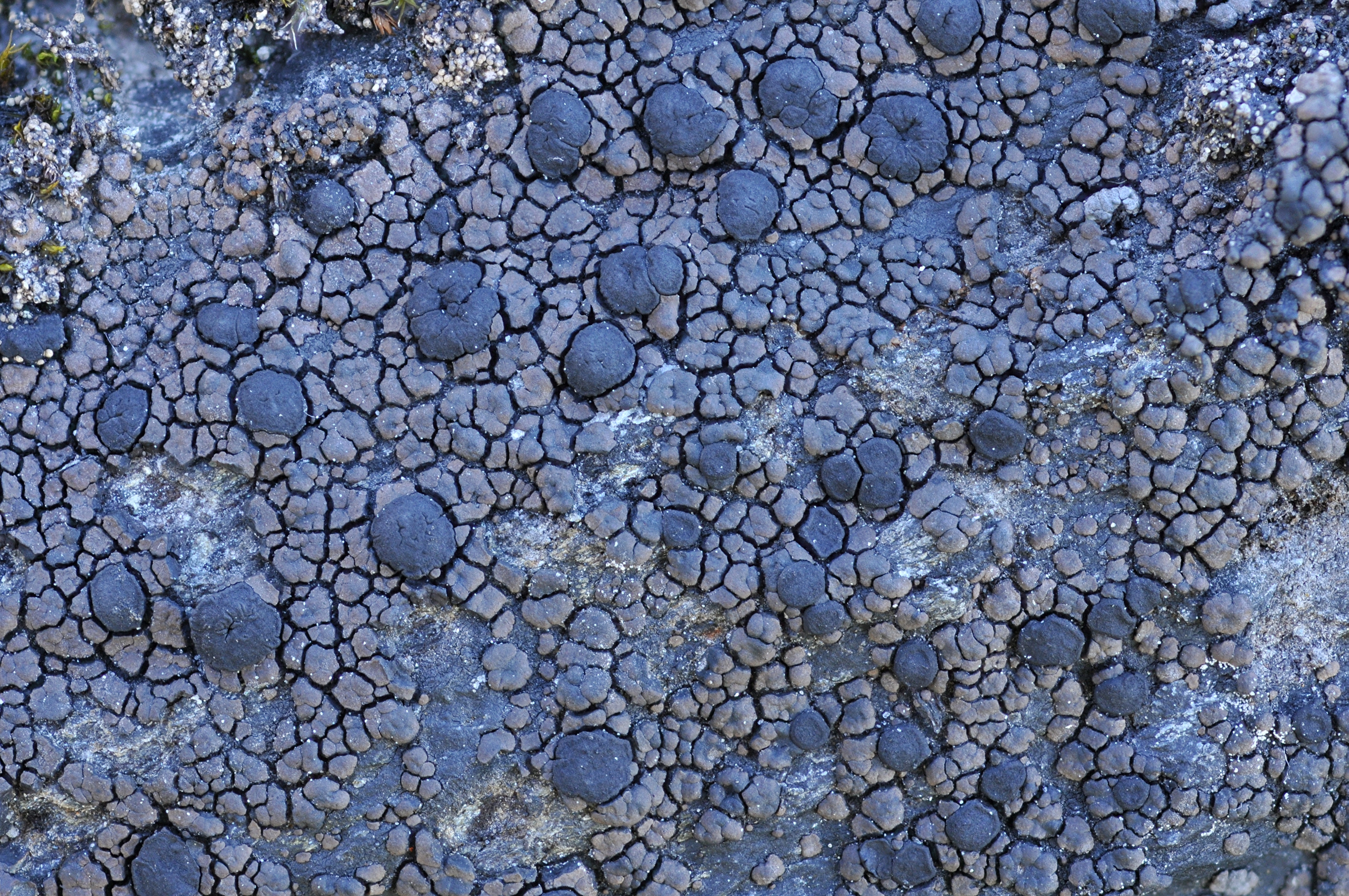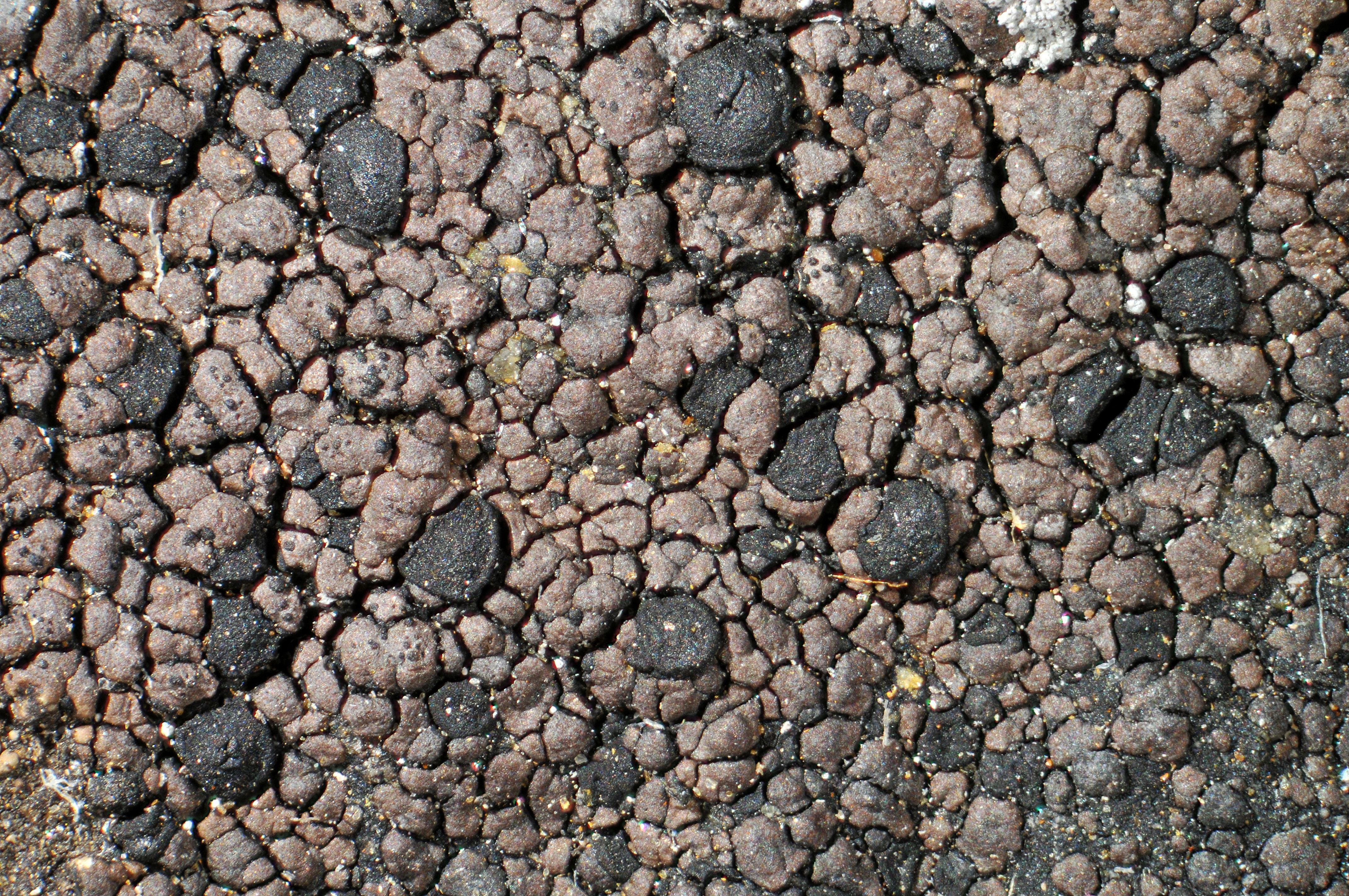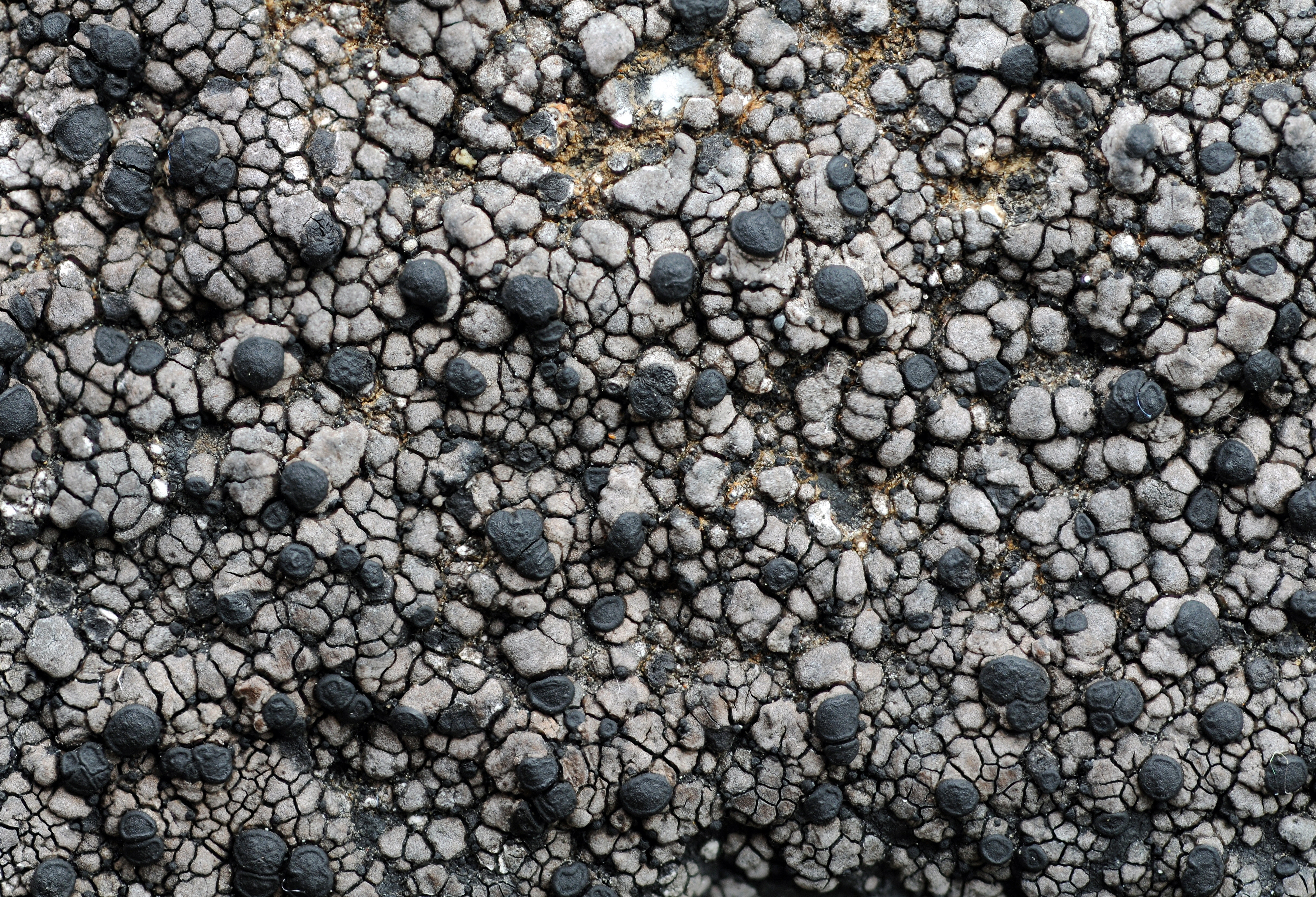Rhizocarpon vulgare
- Innhold
- Morphology
- Chemistry
- Habitat
- Comment
- Look-alikes
Morphology
Thallus areolate, up to 10 cm diam.; hypothallus usually well developed, black; areolae up to 1 mm diam., greyish brown to dark brown, dull, usually more or less contiguous, orbicular or angular to slightly crenulate, plane to moderately convex; medulla KI–. – Apothecia up to 1 mm diam., black, epruinose, orbicular, remaining more or less plane and marginate; excipulum blackish brown, K+ red or K–; hypothecium brown, K–; hymenium colourless; epihymenium dark brown, K+ red; no crystals or granules in the apothecia; ascospores 8 per ascus, 1-septate, soon becoming dark brown, 26–35 × 12–17 µm. – Conidiomata not seen.
Chemistry
Diffractaic acid; spot tests: medulla PD–, K–, C–.
Habitat
On siliceous rock in open situations both in the lowlands and in the mountains. Common.
Comment
The name R. badioatrum is in Scandinavia currently applied to two morphologically rather similar species, R. badioatrum s.str. and R. vulgare (ined.); see R. badioatrum for discussion.




